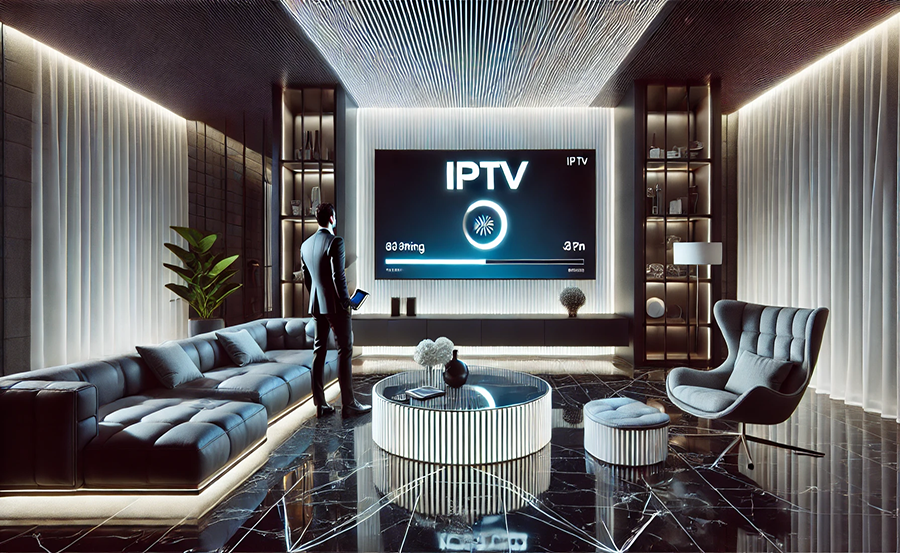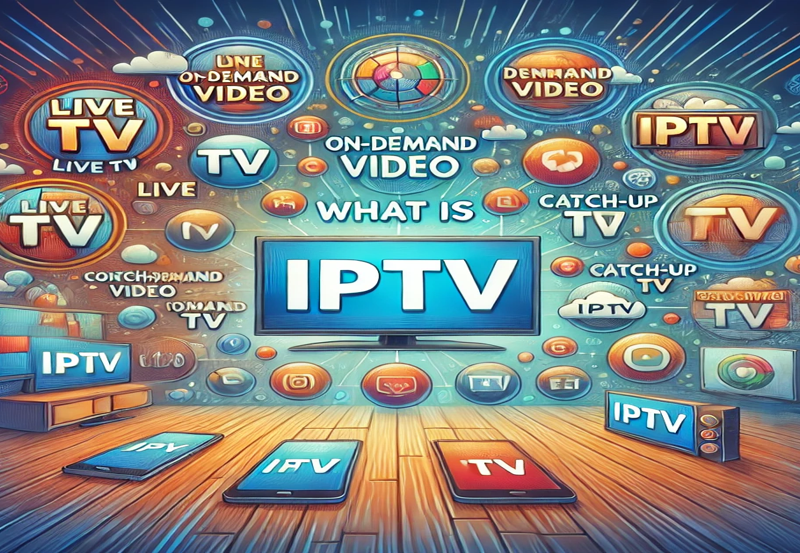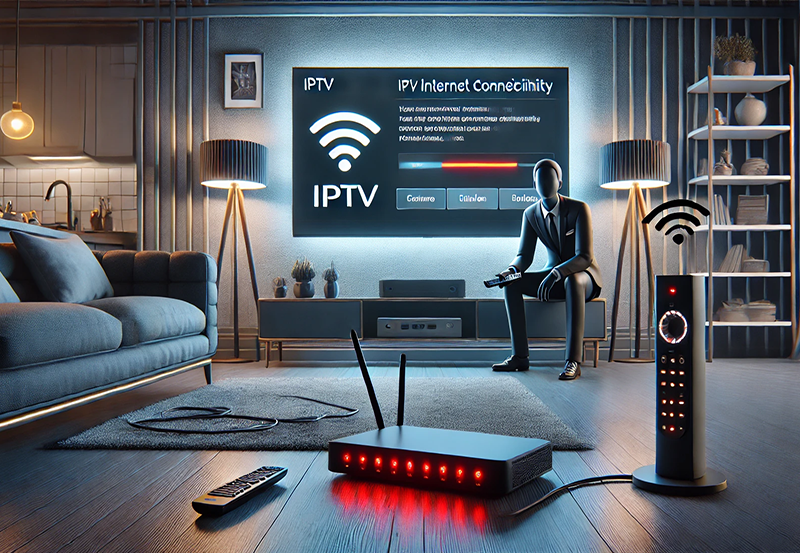Unlocking the Path to a Seamless IPTV Experience
In the ever-evolving landscape of digital entertainment, Internet Protocol Television (IPTV) has emerged as a powerful contender. As streaming TV apps grow in popularity, so does the insatiable demand for uninterrupted viewing pleasure. However, nothing disrupts an immersive moment more than the dreaded buffering icon. If you’ve ever asked yourself how to enhance your IPTV experience by eliminating buffering, you’re in the right place. This article explores various strategies and techniques designed to ensure smooth and efficient IPTV streaming.
Understanding Buffering: What Is It and Why Does It Happen?
Buffering, at its core, is the process of preloading data into a reserved area of memory. This action is meant to prevent interruptions in data flow, ensuring a smooth streaming experience. However, when more data is consumed than downloaded, viewers encounter the infamous buffering symbol, disrupting their digital entertainment journey.
Buy 1 Year IPTV Subscription and Enjoy Unlimited Content
Common Causes of Buffering
Many factors contribute to buffering, making it a common nuisance among IPTV users. Here are a few prevalent causes:
- Insufficient Internet Speed: Your internet connection might not be fast enough to keep up with streaming requirements.
- Network Congestion: Multiple devices using the same connection can lead to bandwidth limitations.
- Hardware Limitations: Sometimes, older devices may not support current streaming protocols efficiently.
- Service Provider Bandwidth Caps: Certain IPTV service providers may throttle your speed after reaching a specific data usage.
Impact of Device Compatibility
Your devices play a pivotal role in your streaming capability. Newer smart TVs, laptops, and even the latest smartphones are typically optimized for modern IPTV apps. Always ensure that your hardware can support your IPTV service provider’s specifications. It’s advisable to check for firmware updates regularly to maintain peak performance.
Selecting the Right IPTV Service Provider
Choosing the appropriate IPTV service provider can significantly impact your viewing pleasure. With an abundance of options, conducting a thorough IPTV service provider comparison is critical. Here’s how to make an informed choice:
Evaluating IPTV Service Features
To explore the best in IPTV entertainment, look beyond the price. Providers vary in their channel offerings, quality of streams, user interface, and customer support. Some essential features to consider are:
- Channel Variety: Does the service offer your must-watch channels?
- Resolution and Video Quality: Can it deliver HD or 4K content?
- Reliability and Uptime: How often do users experience downtimes?
- User Experience: Is the interface intuitive and easy to navigate?
Checking Reviews and Ratings
Reviews from other users can offer insights you might not find in promotional materials. Consider looking for feedback on streaming quality and customer service response time. Be wary of patterns in negative comments, as they may highlight persistent issues rather than anomalies.
Optimizing Your Internet Connection for Buffer-Free Streaming
To eliminate buffering and enhance your IPTV experience, focusing on optimizing your internet connection is pivotal. Here are some practical tips:
Upgrade Your Internet Plan
If buffering persists, it could indicate that your current internet plan isn’t sufficient for streaming IPTV. Contact your internet service provider to discuss plans that offer higher speeds. A plan with a minimum of 25 Mbps is recommended for streaming HD content smoothly.
Invest in Quality Networking Equipment
High-quality routers and Ethernet cables can significantly influence your internet efficiency. A modern, dual-band router reduces interference and improves wireless performance. If possible, connecting your device directly to the modem with an Ethernet cable can further diminish buffering instances.
Conduct Regular Internet Speed Tests
Regularly testing your internet speed can inform you if your network is performing as expected. Numerous free tools are available online to measure your ping, download, and upload speeds. Knowing these numbers helps in diagnosing potential network issues early.
Improving Network Management for Smooth Streaming
Efficient network management can drastically reduce buffering events. Here’s how you can achieve this:
Limit Bandwidth Usage
Assign bandwidth priorities to your devices. Most modern routers offer Quality of Service (QoS) settings that allow you to prioritize traffic to your streaming devices over others. This move ensures that your IPTV streaming takes precedence over less critical activities.
Schedule Downloads and Updates
While updates and downloads are critical, they can consume significant bandwidth. Schedule these tasks for non-peak periods, like overnight, to ensure available bandwidth for streaming during your active viewing hours.
Exploring Advanced Tips and Tools for Enhanced IPTV Streaming
Besides basic fixes, some advanced methods and tools can further enhance your IPTV streaming quality:
Use VPN Services
While VPNs are mainly used for security and privacy, they can sometimes improve buffering by routing traffic through less congested routes. Choose a high-speed VPN reputed for streaming capabilities, keeping in mind that your actual speeds may vary based on server proximity and load.
Optimize App Settings
Some streaming TV apps allow customization of settings to optimize performance. This may include adjusting resolution, pre-caching content, or choosing the nearest content delivery network (CDN) server. Delving into these settings can yield a more stable viewing experience.
Updating Your IPTV Apps Regularly
Like all apps, IPTV applications are frequently updated to fix bugs and improve performance. Ensure automatic updates are enabled or periodically check for new versions manually. Older versions may not support newer features or optimizations, leading to increased buffering issues.
Final Thoughts on Achieving Buffer-Free IPTV Streaming
Experiencing seamless IPTV streaming is akin to a well-choreographed performance. By focusing on selecting the right service provider, optimizing your internet connection, and leveraging advanced tools, you can minimize interruptions and maximize enjoyment. Remember, every step you take to address buffering today brings you closer to a delightful viewing journey tomorrow.
Frequently Asked Questions (FAQs)
Why does my IPTV keep buffering?
Buffering is typically caused by insufficient internet speed, outdated hardware, network congestion, or issues with the IPTV service provider. Identifying the exact cause helps in finding the appropriate solution.
How can I improve my internet speed for streaming?
Start by upgrading your internet plan, using a high-quality router, and connecting your streaming device directly with an Ethernet cable. These actions can significantly enhance your internet speed for streaming.
Is a VPN necessary for streaming IPTV?
While not essential, a VPN can improve streaming quality by bypassing internet throttling and routing traffic through less congested servers. However, not all VPNs offer the same speed benefits.
What should I look for in an IPTV service provider?
When comparing IPTV providers, consider channel variety, video quality, service reliability, and user interface. Customer reviews can also provide valuable insights into the provider’s performance.
Can hardware issues cause buffering?
Yes, outdated or incompatible devices may struggle to support modern streaming protocols, leading to buffering. Keeping your devices updated and ensuring their compatibility with your IPTV service can alleviate this issue.
Unpacking IPTV Disconnections: The Technical Hiccups and Their Solutions





